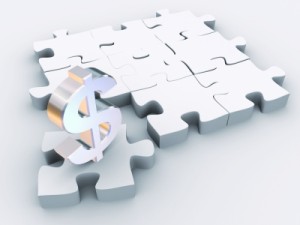Achieving energy efficiency can be likened to assembling a complex jigsaw puzzle – you have to bring many pieces together in order to achieve the desired result.
Our CEO, Scott Ringlein, recently told a fascinating story of a business owner who brought together all the pieces of the energy efficiency puzzle and realized instant profits. This story needs to be heard by all company CFOs who are concerned with the bottom line profitability of their business. In most cases it’s costing your company money to put off energy efficient upgrades.
——
A $70,000.00 expense becomes a $1,000,000.00 upgrade paid for with the positive cash flow from energy savings!
The business in the story was constructed in 1969 and most of the energy hungry technology was original equipment. It’s a very energy intensive operation and the owner thought he could save money by making incremental improvements. He met with a lighting contractor and was given a bid of $70,000.00 to upgrade the outdoor lighting with a more energy efficient model.
The contractor was asked if he knew of any available incentives or rebates for energy efficient upgrades. The answer was no, they simply sold light products and did not provide those types of professional services. The lighting contractor did offer to put the owner in touch with people who knew about energy incentives and it was at this point that our CEO was brought in on the project.
To make a long story short the original $70,000.00 upgrade would have been an immediate expense with an invoiced payment due in 30 days! It was a short term solution to a very large problem and it was not a cash flow friendly proposition.
Our CEO introduced the business owner to the unique program known as Property Assessed Clean Energy (PACE). If a company qualifies for PACE funding it can wrap all the expense of energy efficient upgrades into one payment that must be funded out of the resultant energy savings. Ultimately this project became a 1 million dollar overhaul that corrected all the energy wasting technology and, using a wide variety of knowledge based solutions, the million dollar project resulted in a positive cash flow.
—
“The whole project, including the 1 million dollars worth of energy upgrades and financing, would result in less cash going out each month!”
When pressed by a listener to be more specific about what was meant by “resulted in positive cash flow” our CEO explained that the million dollar plus project would be completely paid for out of the dollars saved from the existing budgeted energy expenses. The whole project, including the 1 million dollars worth of energy upgrades and financing, would result in less cash going out each month! It went from a $70,000.00 one time expense to a cash savings every single month!
How is that possible?
Here are the pieces of the puzzle that created the positive cash flow:
- Start with an energy audit – get an accurate picture of where money is being lost due to energy inefficiencies. A qualified auditor must be technology neutral. The goal is to find the products that work best for a business and not simply sell a technology.
- Look at all aspects of an operation – where are the hidden areas of energy expense that should be addressed. Bigger projects have more incentives, rebates and finance options available that can make them affordable.
- Utilize all financial incentives – there are many incentive programs with money waiting to help fund energy efficient projects. Using this money makes energy efficient upgrades possible due to cost effectiveness.
- Know your timelines – some energy incentives require approval prior to the initiation of the project. Don’t lose out by applying at the wrong time.
- Calculate hidden costs – when comparing technologies the cheapest isn’t always the best. Knowing hidden costs (product lifespan, cost of replacements, frequency of replacements, etc.) makes comparisons accurate.
- Use the most appropriate technology for YOUR business – any technology upgrade has to match the specific needs of a business. Be wary of one size fits all product vendors.
- Complete cost analysis – a long term look gives the most accurate picture of energy efficiency. An analysis must factor in replacement costs, the rising cost of energy, plus the cost of maintenance to get a truly accurate picture. Projecting out to 20 years is not unreasonable when looking for true costs and savings.
“What’s the bottom line?”
The story our CEO told came to an end when one of the listeners asked the question “so what’s the bottom line?” His response was simply this: the company achieved a net energy savings of 85% over what they were using before and that was possible without any increase in cash flow.
An achievement worth retelling don’t you think?
Are you considering becoming more energy efficient? The Energy Alliance Group of Michigan has compiled a free report – Ten Questions to Ask Before an Energy Efficiency Upgrade! The report details important information that assures a successful outcome. If you want a copy of the report simply click HERE.


I will tell you that energy savings via efficiency most also have a depreciation component if it is to represent “real” life actions in facilities. I developed an energy calculation years ago that presented this loss of efficiency so energy managers and owners could see the results.
In addition, most efficiency projects are up placed up against CAPEX activities for funding and must meet the same time to profit hurdles…be it fair or not. I have had this argument with everyone from billionaires to Fortune 500 CFO’s
Enron and other companies ruined off sheet balance financing that could have helped efficiency projects be more accepted
Kevin